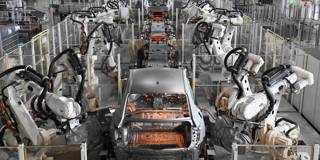Global demand for renewable energy is growing rapidly, fueled by the falling cost of solar panels, wind turbines, and electric vehicles. But new Western tariffs on Chinese imports of these and other goods threaten to derail this progress by forcing American and European consumers to bear the costs of the green transition.
CAMBRIDGE – With historic heat waves sweeping across the United States and other parts of the Northern Hemisphere, June is expected to be the 13th consecutive month of record-breaking global temperatures. The primary cause, of course, is the enormous amount of greenhouse gases (GHGs) in the atmosphere. Despite the existential threat posed by rising atmospheric concentrations of GHGs, emissions continue to increase at a faster pace than previously anticipated.

CAMBRIDGE – With historic heat waves sweeping across the United States and other parts of the Northern Hemisphere, June is expected to be the 13th consecutive month of record-breaking global temperatures. The primary cause, of course, is the enormous amount of greenhouse gases (GHGs) in the atmosphere. Despite the existential threat posed by rising atmospheric concentrations of GHGs, emissions continue to increase at a faster pace than previously anticipated.